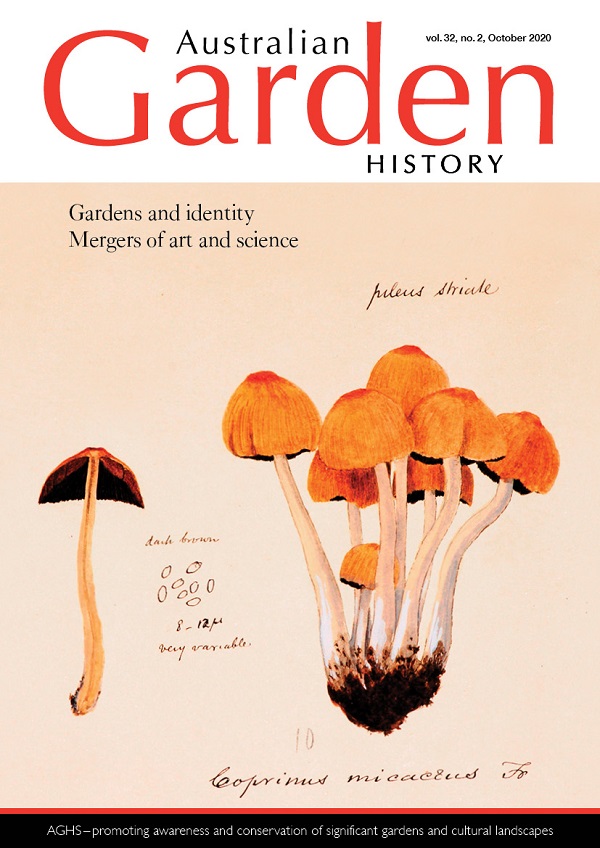Contents
Imagining Australianness: national identity and the bush garden movement Jasmine Rhodes
In the decades following the Second World War, the political, social and cultural identity of Anglo-Celtic Australians was shifting. Aligned with this shift was an emerging landscape style, which proponents understood as an expression of characteristics that were essential to both Australia’s landscape and people. This was the Australian bush garden.
Unearthing women’s activism Renée Mickelburgh
Writer Margaret Somerville asked: ‘What happens when a woman moves out of her garden into a wilderness that is both physical and political?’ The author’s studies have revealed a complex history of Australian women’s garden storytelling. That history points to a deep and abiding connection to place and a commitment to social and environmental justice.
Flowers and fungi: illustrations by Ferdinand von Mueller’s nieces John Dowe, Sara Maroske, Tom May
Baron Ferdinand von Mueller arrived in the Colony of South Australia in 1847 accompanied by his two surviving younger sisters, Bertha and Clara. Clara took an active interest in botanical collecting and accompanied Mueller in the field and assisted with specimen preparation. At least six of the Clara’s children collected specimens for Mueller, thus becoming a reliable part of the network of botanical collectors that Mueller established. In addition to their botanical collecting sisters Marie and Henrietta had an interest in painting flowers and fungi.
Sweet fields: the cultural landscape of the sugar cane Glenn Cooke
By the second decade of the twentieth century the cultural impact of the sugar industry had been some sixty years in the making. This article traces how the crop shaped the vision and culture of the Queensland landscape.
Smoke, black cockatoos and banksias Jessica White
On Boxing Day 2019, two separate lightning strikes started fires that eventually consumed 37,000 hectares of the eastern half of Stirling Range National Park, one-third of the park. The last, unburnt patches of the threatened ecological community were destroyed. The population of Banksia montana, which consisted of only eight mature plants, was razed.
Hamilton Hume’s garden: living history at Cooma Cottage Claire Baddeley and Corrine Chalmers
Upon finishing his work as an explorer Hamilton Hume chose to settle in the NSW town of Yass and became a successful pastoralist. In 1970, his former home, Cooma Cottage, was acquired by the National Trust of Australia (NSW), which is preserving the vestiges of this colonial garden, including its rare Picconia excelsa tree.


